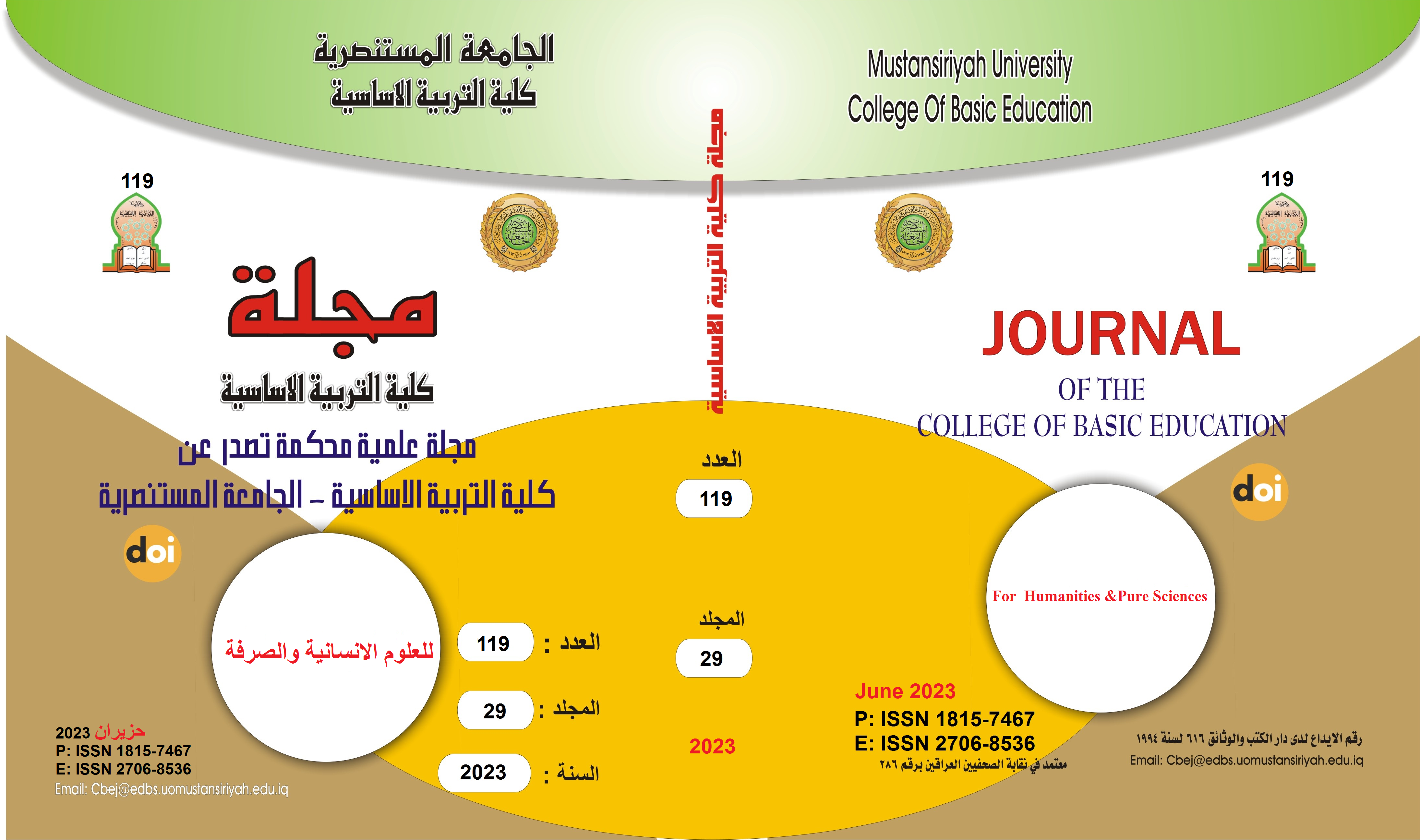Evaluating the content of the mathematics book for the Sixth grade of primary school according to the (4MAT) model for learning styles
Main Article Content
Abstract
The current research aims to (evaluating the content of mathematics books for the sixth grade of primary school according to the (4MAT) model for learning styles) to achieve this goal, the researcher asked the following questions:
The first question: What are the criteria for learning styles according to the 4MAT model that should be available in the content of mathematics books for the primary stage?
The second question: To what extent are the criteria of the (4MAT) model available for learning styles in the content of the mathematics textbook for the sixth grade of primary school?
To verify the goal of the research, the researcher followed the descriptive analytical approach, as the sample of the research was from the content of the mathematics book for the sixth grade of primary school by the Iraqi Ministry of Education for the academic year (2021-2022 AD), where the researcher relied on the research tool represented by the list of criteria of the model (4MAT) for learning styles according to McCarthy, 1990)) for the purpose of using it in analyzing the content of the mathematics textbook for the sixth grade of primary school, and verifying its veracity after presenting it to a group of specialized arbitrators, as it obtained a percentage of agreement (87%). After using the search tool to analyze the content of the mathematics textbook for the sixth grade of primary school, the content analysis card was formed according to the criteria of the (4MAT) model for learning styles in its final form, of four types: (imaginary and includes one main criterion and (13) indicators, and analytical and includes a criterion One main criterion and (10) indicators, logical, which includes one main criterion and (16) indicators, and dynamic, which includes one main criterion and (12) indicators.
The mathematics textbook for the sixth grade of primary school was analyzed according to these criteria, and a sample of the analysis sample was presented to a number of specialized arbitrators and they agreed on the validity of the analysis process. The use of other analysts and obtained a percentage of agreement between analysts (0.92) using the Holsti equation.
The results of the research revealed that: the imaginary pattern achieved the first rank with a percentage of (29.26%), and the analytical pattern came in the second place with a percentage of (26.18%), and in the third place came the logical pattern with a percentage of (25.36%) and the dynamic pattern came in the last rank with a percentage of (19.20%). ) in the content of the mathematics textbook for the sixth grade of primary school, and when comparing the four learning styles to the spoken ratio agreed upon by arbitrators and specialists, all of them came to a weak evaluation level.
Based on the research results, a number of recommendations and suggestions were presented.
- Inviting specialists and those concerned with preparing school curricula for mathematics in the Ministry of Education to benefit from the results of this research in developing the content of mathematics books for the primary stage, and the need to include the criteria of the (4MAT) model for learning styles in the content of primary school books.
- Conducting other analytical and evaluating studies for mathematics books according to the criteria of the (4MAT) model for learning styles for the different academic stages.
Article Details

This work is licensed under a Creative Commons Attribution-ShareAlike 4.0 International License.
